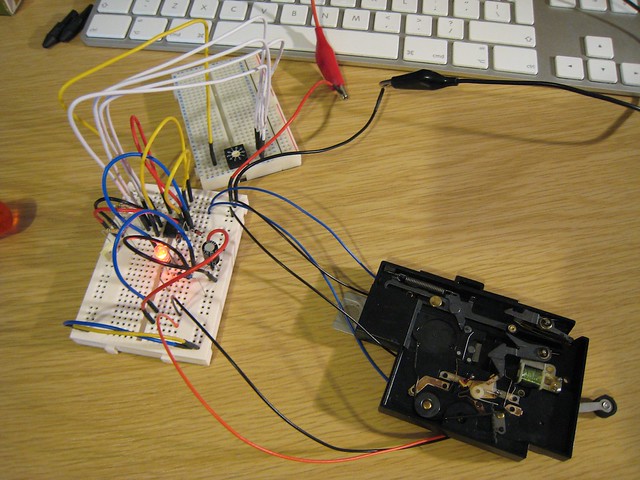zzpza
Member
So, in my pursuit of making the Polaroid folding land cameras from the 60's and 70's into an everyday usable camera, I had to address the metering system.
Previously I had converted the camera to use modern AAA batteries and currently available Fuji FP-100C, FP-3000B film (see here).
But this still meant I was at the mercy of the horrible metering system. There was only one solution in my mind (beyond swapping the lens and shutter, which is very expensive) and that was to replace the electronics controlling the shutter.
After a bit of research I found someone who had the same idea and placed all their project info in the public domain. This was a good place to start using their design as a pilot to see how the camera would handle.
After collecting the necessary parts to build the new electronics, I tried it out on the shutter from a Polaroid 320.
Testbed by zzpza, on Flickr
With the electronic design working, I transferred it to stripboard, took my old Polaroid 340 apart and connected it all up.
Measure Twice... by zzpza, on Flickr
The LDR ("Electric Eye") and all the old analogue electronics have been removed. The window used by the LDR is now where the shutter speed selection dial is located.
Lens Board Modification by zzpza, on Flickr
The shutter currently has a range of bulb, 1s to 1/256th.
Prototype One by zzpza, on Flickr
In it's current state there are a few areas that I can make some improvements, but all in all it's now a pretty fun, easy to use and - most importantly - predictable camera.
Here's a photo from the first film pack I ran through the camera.
Polaroid 340M 00003 Genesis by zzpza, on Flickr
Previously I had converted the camera to use modern AAA batteries and currently available Fuji FP-100C, FP-3000B film (see here).
But this still meant I was at the mercy of the horrible metering system. There was only one solution in my mind (beyond swapping the lens and shutter, which is very expensive) and that was to replace the electronics controlling the shutter.
After a bit of research I found someone who had the same idea and placed all their project info in the public domain. This was a good place to start using their design as a pilot to see how the camera would handle.
After collecting the necessary parts to build the new electronics, I tried it out on the shutter from a Polaroid 320.
Testbed by zzpza, on Flickr
With the electronic design working, I transferred it to stripboard, took my old Polaroid 340 apart and connected it all up.
Measure Twice... by zzpza, on Flickr
The LDR ("Electric Eye") and all the old analogue electronics have been removed. The window used by the LDR is now where the shutter speed selection dial is located.
Lens Board Modification by zzpza, on Flickr
The shutter currently has a range of bulb, 1s to 1/256th.
Prototype One by zzpza, on Flickr
In it's current state there are a few areas that I can make some improvements, but all in all it's now a pretty fun, easy to use and - most importantly - predictable camera.
Here's a photo from the first film pack I ran through the camera.
Polaroid 340M 00003 Genesis by zzpza, on Flickr







